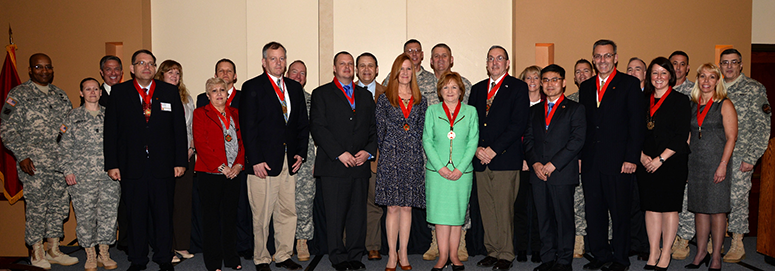
U.S. Army Installation Management Command
U.S. Army Installation Management Command top leaders held a conference here for garrison commanders and command sergeants major to set a collective course for IMCOM 2025 And Beyond.
Led by Commanding General, Lt. Gen.David Halverson, the two-day conference included leader to leader straight talk on IMCOM policy changes, panel discussions on Dept. of the Army initiatives and guest speakers all tied to the command’s mission of enabling readiness.
“We’re a member of the combined arms team, a critical element of readiness,” Halverson told his region and garrison leaders. “With one voice, we have to be able to articulate IMCOM’s importance to senior mission commanders and let them know that IMCOM is the right investment.”
Through sound business decision-making, innovative partnerships and implementation of IMCOM 2025 And Beyond strategic design, the command is investing in itself – developing the agility and flexibility to be responsive to the Army’s needs today and in the future, Halverson said.
Couched in a theme of seasonal change, Assistant Secretary of the Army for Installations, Energy and Environment, Katherine Hammack, addressed the challenges of developing, defending and executing budgets in the current austere fiscal climate.
“We have to weigh risks daily,” Hammack said. “What’s acceptable loss? Compare loss of life to buildings that decay a little faster . . . grass that grows a little higher? Gen. Halverson and I are okay with the grass growing higher if it means that the troops are trained, ready and properly equipped.”
Change is the solution, according to Hammack and it comes in the form of repurpose and realignment.
“The best thing a community can do is embrace BRAC [Base Realignment and Closure],” she said. “The alternative is a ghost town, but through BRAC there is the potential for reorganization and repurpose. Our strategy is to increase the resiliency of our bases.”
Hammack also suggested cost savings through community partnerships, green energy initiatives, like solar power, and repurposing structures instead of leaving them empty.
“It costs 30 cents a square foot to maintain a building and $3 per square foot to sustain that building,” Hammack said. “Compare that to $30 per square foot to restore a building or $300 per square foot for new construction.”
People, their commitment to both institution and service, and their value were highlighted frequently during presentations on IMCOM’s Strategic Human Capital Plan, new succession management policy and Army Civilian Education System.
The 2014 Stalwart awards ceremony was a tangible reminder that people are the center of IMCOM. Fourteen members of Team IMCOM were recognized for their leadership, representation of the highest standards in character and organizational values and for their inspiring examples as agents of change within the command.
Awardees included: Gregory Holzinger, U.S. Army Garrison Stuttgart director of Family and Morale, Welfare and Recreation; Janeatta Meert, U.S. Army Garrison Wiesbaden director of Army Community Service; U.S. Army Garrison Aberdeen Proving Ground Fire Chief, Scott Delay; Fort Lee Deputy Garrison Commander, Melissa Magowan; Michael McKinnon, deputy garrison commander at Fort Drum; Russell Stokes, director of Public Works at U.S. Army Garrison Natick; Yun Heo, U.S. Army Garrison Camp Red Cloud director of Public Works; Angela Major, chief of the Plans, Analysis and Integration Office at U.S. Army Garrison Fort Wainwright; Joint Base Lewis-McChord Armed Forces Community Services director, Alecia Grady; Stephanie Sarver, PAIO chief at U.S. Army Garrison Fort Polk; Jay Tulley, energy manager of U.S. Army Garrison Presidio of Monterey; Michael Webb, human resources director at U.S. Army Garrison Fort Carson; Cheryl Decker, IMCOM Central Region’s director of human resources and Michael Swingler, chief of Religious Support Operations at IMCOM headquarters.
As the conference concluded, Halverson emphasized the need for leaders, the workforce and IMCOM programs and infrastructure to be adaptable and transformative to successfully carry out the mission.
“The Army is going to have to adjust. IMCOM is going to have to adjust,” Halverson said. “That’s where the human dimension comes in . . . people are our greatest capability. Thank them every day.”
